Weird reason for Aussie city’s ‘eerie’ landmark
It used to be a key part of a major city’s premier tourist attraction, but one decision has left it an abandoned and ominous centrepiece that serves to perplex visitors.
It’s at night when the curious landmark is most stark.
All lit up, it glows in the heart of Newcastle’s revitalised riverfront, reflected in the slowly sloshing waters of the Hunter.
As the new trams slide by and people stroll away from one of the flurry of new bars, it’s remarkable for its sheer bulk as much as its brightness.
But as you step closer there’s something not quite right about this landmark in the city’s centre.
It has no name, not an official one at least. It didn’t need one because it was once part of something far bigger.
Yet, now it appears to have no reason to exist at all other than unnerving and playing with the minds of unsuspecting tourists.
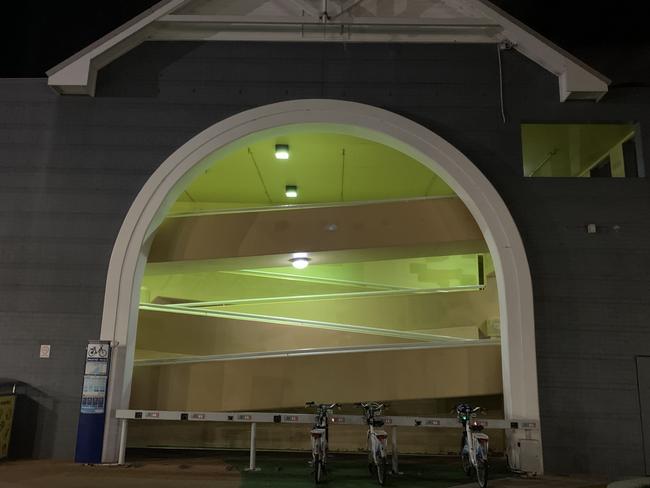
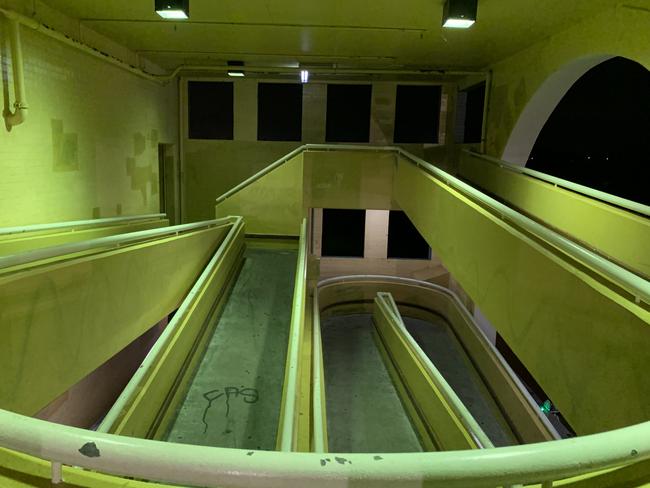
Visitors might wander into the structure, enticed by its concrete grandeur and the slopes that draw you ever upwards, twisting and turning over and under one another. Painted a particularly jaundiced shade of yellow, it’s not exactly pretty.
But it seems to promise a destination – perhaps a bridge to somewhere or at the very least a decent view of the huge cargo ships slithering past.
Yet, it does neither. The slopes sit silent and lonely. Like an abandoned rake of escalators in a dead mall that have long ground to a halt, but someone forgot to switch off the lights.
“It’s eerie isn’t it?” a staff member at one of the many eateries that have opened in the CBD tells news.com.au. “I went up there the other night, just to see. You get up to the top and, it’s true, you really can’t go anywhere.
“We call it the ramps to nowhere”.
RELATED: Behind Sydney’s most mysterious door
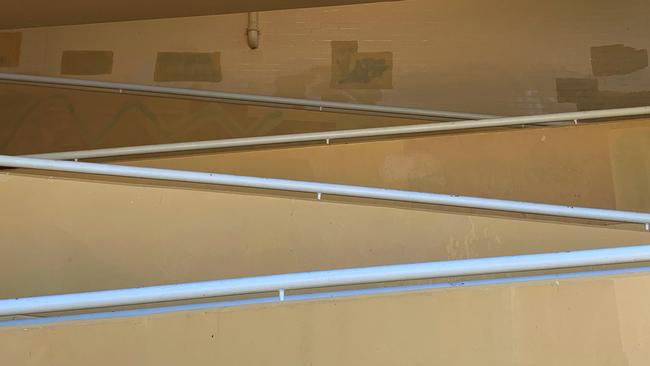
As you reach the summit the same graffiti strewn walkway simply leads you back down to the ground, delivering you back to where you began.
It’s like the literal incarnation of one of MC Escher’s famous images of impossible staircases that both rise and fall at the same time.
It once did have a role. But now it’s a relic left behind in the rush to transform Newcastle from a decaying industrial town to a must-see city.
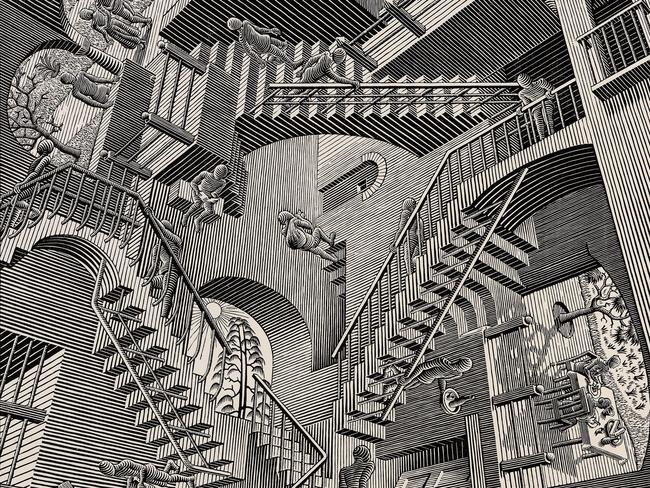
MENACED THE CITY FOR 30 YEARS
A local, looking at the bulk carriers coming into dock, says there are clues to its former life. A barricaded door on one ramp; a bricked-up wall on another
“It was the entrance to the Queens Wharf observation tower,” says one woman looking out at the water.
“It gave views of the city and river.”
Then she comes in closer and whispers: “But everyone used to just call it the ‘penis tower’,” she confides with a smile.
And by “we” she did indeed mean the whole of Newcastle. Forty metres high and crowned by a protruding observation deck reminiscent of a mushroom, it was barely ever called by its real name.
RELATED: Newcastle’s ‘embarrassing’ Queens Wharf Tower to be demolished
DECISION THAT LEFT LANDMARK ABANDONED
The tower was razed to the ground in September 2018 – the city had had enough of the jibes.
The Newcastle Star referred to the tower as a “phallic colossus” that had “menaced the city skyline for 30 years”.
City council CEO Jeremy Bath said the city had endured decades of “lewd jokes”.
“There really is no other way to describe the Queen’s Wharf tower other than as an embarrassment to the city.”
The ramps were a key part of the embarrassing erection. Visitors would thread themselves up the curling concrete to reach a bridge that would deposit them within the bowels of the tower.
Once they had surveyed Australia’s seventh largest city – larger than Canberra, Hobart or Darwin – the ramps would exit them into a first floor restaurant.
Now its phallic neighbour is gone and, last year, the restaurant closed after a fire.
Just the ramps remain.
“Some say they’ll pull the whole block down, ramps and all,” one local said.
When the tower was picked apart in 2018, that would have been the sensible decision. But getting rid of the slopes is no easy task as it would likely involve demolishing the restaurant and maybe the rest of the building too. It wouldn’t be cheap. But by choosing only to rid the city of the tower, Newcastle is left with a centrally located forsaken landmark of no use.
A spokeswoman for Newcastle City Council confirmed to news.com.au it owned the forlorn building but, for now at least, it’s staying.
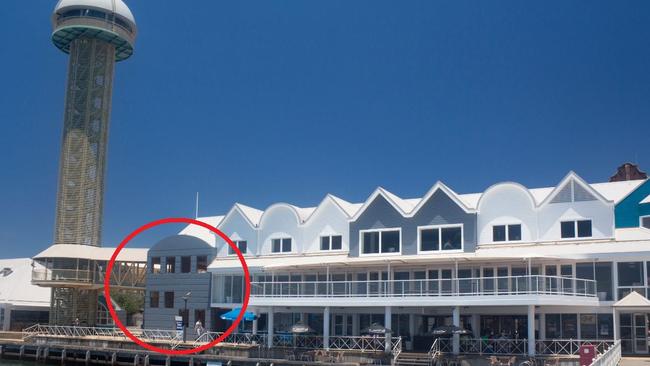
STAIRWAY TO HEAVEN
However, its days could be numbered due to a new project called the “stairway to heaven”.
This would see a car park demolished and replaced by a thoroughfare (reminiscent of “Rome’s Spanish Steps” according to a council press release) between the water and the historic Christ Church Cathedral which keeps watch over the CBD.
“By introducing a grand staircase with active shop fronts, landings and courtyards, it would bring a European quarter feel, highlighting the character of Newcastle’s historic CBD and re-establish a link to the harbour,” said council’s Mr Bath.
A series of ominous concrete ramps might detract from this dream of Italy on the Hunter.
While they remain frozen in time, around them the city progresses.
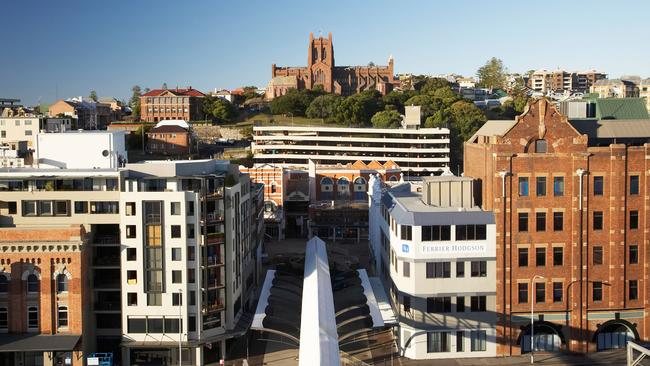
Old pubs are being spruced up and small bars have emerged; the new trams are reflected in the glass of an equally new university campus; the rotund sixties council administration block is being transformed into a five-star hotel.
The David Jones store, the closure of which in 2011 was one of several previous low points for the CBD, is being turned into fancy flats and yet another smart hotel.
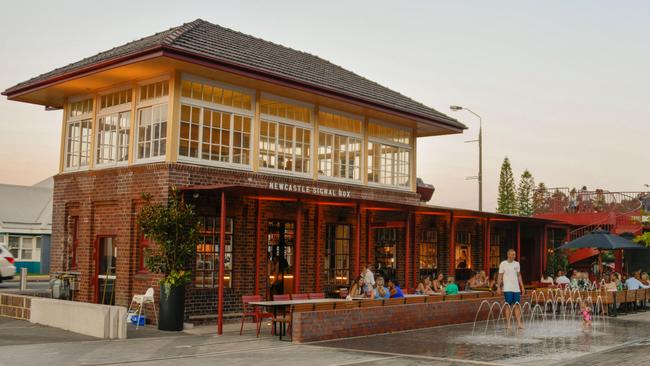
The old railway signal box – trains from Sydney now terminate at a sparkly new interchange on the CBD fringe – is reborn as the Signal Box bar and restaurant.
Visitors to the Hunter Valley, that might have avoided Newcastle, are now using it as a base to explore the region.
“This place has changed so much in just a year,” says a waiter. “The old station has opened up (into a public park and market space), a Woolies Metro is going in, and there’s all the hotels.
“It used to be dead around here, it’s definitely changed for the better.
“Although they still have the bar lockouts,” she lamented, pub restrictions that even Sydney has now ditched.
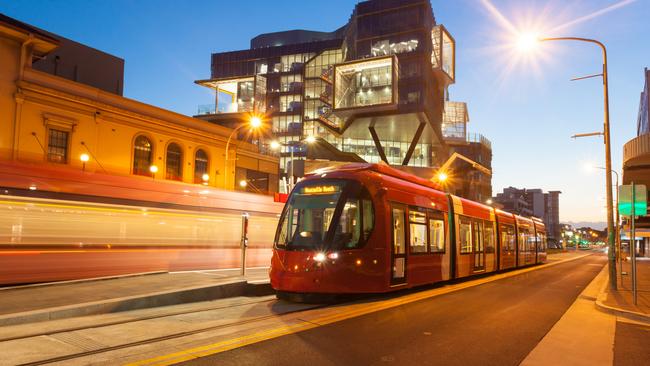
The silent slopes continue to shine through the night; a dazzling reminder of the now shunned 1980s vision of Newcastle. But as the city embraces a new 2020s vision of the future, they may finally be felled.
The “stairway to heaven” could be the death knell for the “ramps to nowhere”. Newcastle’s bizarre and foreboding landmark could soon be a mere memory, like the ultimately impotent tower it was designed to serve.

